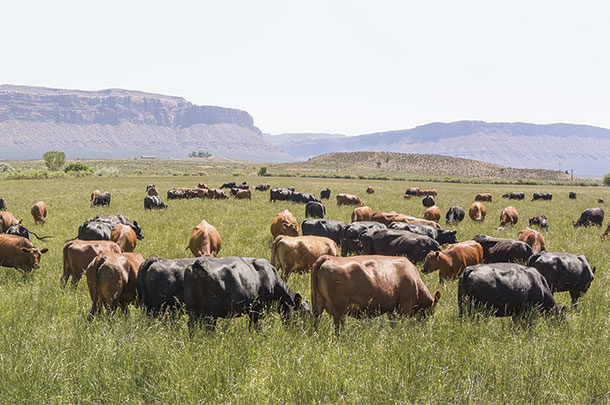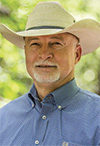As the growing season advances, producers should know about what proportion of the annual forage production occurs by month. Typically, about 25 to 30 percent of the annual forage production should have occurred by June 1 for most regions of the U.S. other than the Southwest region.
By early July, 60 to 70 percent of annual forage production should be produced. By early September, about 90 percent of the annual production will be completed except for the extreme South and Southeast regions, with the extended growing season the milder environment allows.
What is not produced in the spring thus far may not be recovered later in the growing season, even with favorable moisture conditions. Therefore the question is: Is your forage production where you expect it to be at this point in the growing season? Let’s consider this question as it pertains to the remainder of this growing season, forage types and management.
Much of the U.S. experienced a late spring – again. It appears the growing seasons are beginning later and often ending later each year. Weather patterns are less predictable, but good management allows for greater forage resiliency.
If pastures have less residual than desired, or you are feeding hay longer than planned, then you are probably stocked heavier than the land resources should carry with your operation’s existing pasture management. For every month of hay feeding or residual grazing over-planned, you are at least 8.3 percent overstocked (with current management inputs).
One month is one-twelfth of a year or 8.3 percent. This is a simple means to assess if you are running too many head for the resource or additional resources are required to carry the current number of head. It is often more cost-effective to destock a little than to provide more inputs. However, every producer needs to make his own economic analysis to determine the better alternative.
South and Southeast regions
For these regions, warm-season, perennial, introduced pastures such as bermudagrass, bahiagrass, introduced bluestems and kleingrass are usually at peak production. Fertilizer and weed control management should already be in place.
It may be time to begin considering reapplying fertilizer to hay fields following the first harvest. Many producers routinely apply fertilizer after baling. If rainfall appears apparent before hay can be harvested, there is no reason not to apply fertilizer immediately before the rains and before harvest.
Although most producers dislike driving the fertilizer truck across a hay field almost ready to be cut, putting the fertilizer to work ahead of the harvest and strategically timing it with a reliable rain event allows for more rapid recovery without waiting on the next rain to put the fertilizer into the soil.
In all reality, the driving damage or reduction to harvest is much less than imagined. It just leaves the field looking more ragged than usual after harvest, but rapid recovery more than makes up the difference in appearance. This works especially well if using dry fertilizer.
Fescue country
In the portions of the U.S. where fescue is the predominant forage, concern for fescue toxicosis in livestock is mounting or has arrived. Clipping seedheads and reproductive structures can help alleviate the potential issues incurred by cattle grazing fescue during the summer months. Ideally, there are other forages livestock can be grazing during the summer, in addition to fescue.
Clovers, other legumes and warm-season grasses can add diversity to grazing in fescue country. However, if not already present, this spring is too late to attempt establishment of these forages – with the possible exception being annual, warm-season forages into cropland.
Plains states
Now is a good time to assess pastures and determine those you would like to provide some additional recovery where native-grass pastures exist. Deferring the grazing of these pastures, the second half of the growing season until after frost, allows forages in these native-grass pastures the opportunity to reach maturity, providing additional stockpiled production and enhanced stand vigor.
Rotating this deferment across all pastures over the course of about seven years provides that “Levitical” rest to fields prescribed biblically many centuries ago.
It is also important to assess stocking rates and grazing management plans as summer nears. If weather indicates an unfavorable summer ahead, utilize pastures with limited livestock water early in the season, saving pastures with reliable water through the summer until later in the season.
June is a critical time for native grass management as the growing season until the following spring will be set by the end of the month (assuming about 70 percent of annual production by early July).
Southwest region
The monsoon season will begin later in the summer if it occurs. The existing forage reserves are expected to last until the late-summer rains begin. If fortunate, some of the areas will have received some rain in the spring. If running out of forage now or soon, destocking may be needed to prepare for next year, after the rains.
Taking time now to assess pastures and pasture conditions will allow better, timely management decisions to be made prior to the arrival of the monsoon season.
While we are still early in the growing season, we should expect pastures to be getting ahead of the grazing cattle. If rotational grazing, strive to manage residuals at excess levels; in essence, top-graze the upper one-third of the leaf area before rotating to the next paddock or pasture. Continue the top-grazing approach as long as possible, hopefully into July.
Eventually, moisture conditions or the season will slow plant growth, and grazing rotations need to slow down as well, but always manage to keep adequate residuals. It is a good idea to assess your pastures again at the beginning of July and determine if your 70 percent of annual production is where you expect it to be.
Hopefully, it is better than usual. If not, begin planning adjustments necessary to get you through the remainder of the forage year.
PHOTO: Cattle grazing in a pasture. Photo by Mike Dixon









